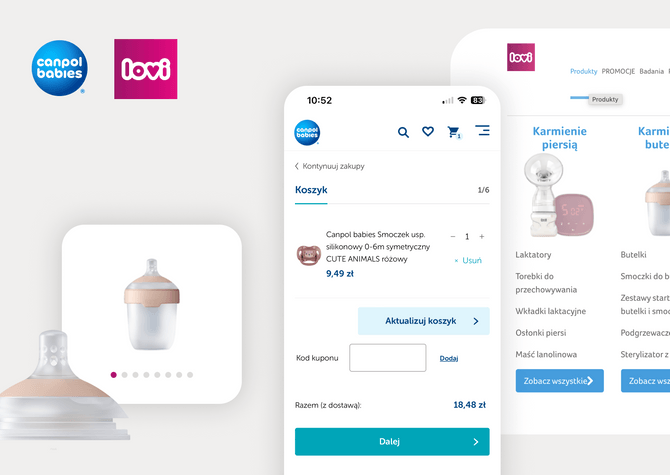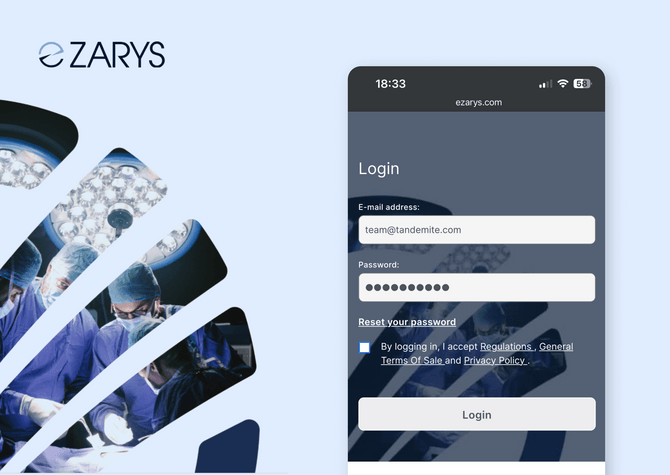Common pain points
Problems PIM is designed to eliminate

Inefficient product launch workflows
Every product can hold a few or even hundreds of customer-relevant features and often needs to be presented in several language versions. That’s why preparing one product for sale is no small task. Without a streamlined process, it can take weeks to go live.

Disorganized data sources
Spreadsheets, warehouse systems, shared folders, team notes... without one source of truth, your teams waste time and speak different “languages” about the same product. Each department forms its own version of the truth, making collaboration harder and decisions slower.

Conflicting product data across channels
Changing a product photo? Updating a spec? Without PIM, that means repeating the task across every channel – and errors slip through. The result: mixed and inconsistent messages.

Poor and incomplete product data
Have you ever wondered why competitors sell more with the same offer? It’s often due to better product data.
Many businesses know their product information is flawed – incomplete images, outdated content, and unclear product information push customers away.
48 %
of organizations still rely heavily on spreadsheets to manage product data
46 %
of companies use five or more sources for a single product’s data. This means they need to merge and format data in a consistent way to keep it useful, up-to-date, and accurate
20 %
of businesses have confidence in the quality of their product data. That’s a warning sign – and a call to improve the tools, workflows, and mindset around data management
What’s in it for you?
PIM brings measurable gains
Our PIM solutions turn data chaos into a clear advantage. Need help or have questions? We’re here to guide and grow with you.

Improved sales outcomes
Accurate and unified product data improves customer decision-making, directly increasing transaction volume and conversion rates.

Streamlined operations and better time management
PIM optimizes workflows by automating critical data tasks, leading to improved productivity and smarter use of employee time. Product data is processed and shared automatically, without manual effort.

Cost reductions
Fewer manual tasks and smarter resource allocation lead directly to lower operational costs.

Improved customer engagement
When product data is complete and clearly presented, customers can navigate more easily. PIM software helps you deliver the right information in the right way.

Growth without technical or organizational limits
With PIM, you’re ready to grow, whether that means entering new markets, adding channels, or responding to business shifts. PIM lets you manage any size product catalog from one reliable source.

Faster and simpler product launches
PIM transforms your product workflows by optimizing data gathering, validation, and distribution. The result? Launch-ready information across all channels – giving you a strategic edge in getting to market first.

All it takes is the right technology to get real results
PIM systems that perform – for your success, your team’s efficiency, and your customers’ experience

Pimcore
We design and implement Pimcore-based PIM systems that centralize product data, speed launches, and scale across markets. See our approach, services, and ROI.
Read moreAkeneo
Transform your product information management. We offer project takeover, audits, custom features, integration, migration to Akeneo. Get expert PIM support.
Read moreErgonode
From audits to custom features, we offer expert support for your product information management needs. Ergonode PIM tailored to your needs. Book a consultation.
Read more
Disorder in product information management is an issue every organization encounters sooner or later. Scattered data, inconsistent specifications, and the burden of manual updates create inefficiencies and frustration.

You can eliminate this problem permanently. At Tandemite, we implement robust PIM systems that bring clarity and automation to your product data, regardless of the number of products, markets, or sales platforms you operate.
We work with Akeneo, Pimcore, and Ergonode, without promoting one over the others. Our priority is to make sure technology supports your strategy instead of complicating it. What counts is what fits your case best.
See for yourself
Does your business need PIM?
Product information helps customers understand, compare, and buy. When data is a foundation of your operations, a PIM system keeps it at the highest standard.

When is the right time to implement PIM?
You’re expanding your product offering
Data chaos can hold back even top products. No matter how strong your offering is, without a central hub for product data, adding or updating products becomes a logistical challenge. It increases the risk of errors and mismatches. PIM simplifies onboarding and ensures your data meets the standards of every sales channel you use.
You’re entering new markets with localized versions
Going global? Your product data must keep up. A PIM platform gives you control over multilingual, multi-currency product data – and automates distribution across all the right platforms, tailored to each market.
Your teams struggle with data silos and miscommunication
PIM centralizes product information, enabling efficient teamwork. Authorized users can collaborate from any location, using built-in tools for simultaneous editing, version tracking, and automated approval processes. This ensures data accuracy and removes the need for manual file handling.
You’re aiming to sell across multiple channels and adopt an omnichannel strategy
As your sales network grows, data chaos can creep in – unless you have PIM. Whether it’s your website, a marketplace, social media, or a retail store, PIM helps you manage all product data in one place. Your customers always see the right details, no matter where they find your product. That’s key to a smooth and trusted shopping experience.
You’re collaborating with a wide network of suppliers
When product information comes from many sources and needs to be shared externally, PIM is a game-changer. It streamlines data into a single format, automates imports and exports, and connects with outside platforms. This improves speed, accuracy, and business efficiency.

Who feels the biggest impact from PIM in daily work?
Operations director
Struggles: Inefficient operations, high operational costs, and product launch delays.
How PIM helps: With PIM, you can reduce operational costs by as much as 20% through automation and streamlined product management – from creation to distribution. It ensures clean, reliable data, helping you avoid errors and get products to market faster.
Business owner
Struggles: No unified vision, scaling issues, rising data costs, and losing your competitive edge.
How PIM helps: As a business owner, your focus is growth, profitability, and market leadership. With structured product data, you gain the insights needed to make better decisions, grow your market share, and drive digital transformation.
Marketing manager
Struggles: Difficulty personalizing content, inconsistent data for campaigns, time-consuming catalog updates, and content chaos across multiple channels.
How PIM helps: PIM empowers you to tailor campaigns with precision, update content instantly, and align messaging across every touchpoint. Enjoy SEO gains, consistent messaging, and better engagement.
E-commerce executive
Struggles: Poor conversion, scaling issues, fragmented data, and weak personalization.
How PIM helps: With PIM, you gain control over product information, enabling faster time-to-market and seamless expansion. Unified data empowers personalized offers and consistent customer journeys – key to boosting loyalty and online sales.
IT director
Struggles: Disconnected systems, outdated tech, complex data structures, and risk of errors or data unavailability.
How PIM helps: PIM integrates with ERP, CRM, and e-commerce platforms to streamline operations and protect data. It forms a solid base for continued digital transformation.
Down-to-earth support
PIM experts you can trust
Worried that PIM might be too technical or that your team won’t adapt easily?
We deliver professional training and full support to guide you through the transition. Whether you lead a company or head up e-commerce, IT, operations, or marketing – we align with your responsibilities and equip you with the knowledge to handle product data effectively.
Unsure how to get your data ready for a new system?
Over half of organizations (55%) agree that structured product data reduces errors, improves customer experience, and increases market competitiveness. At the same time, 59% acknowledge how much effort it takes to achieve that standard. The Tandemite team is here to help. You’ll get a complete audit, clear identification of your data sources, and expert support in enriching and standardizing your product data before moving to a PIM solution.
High costs for implementation, licensing, and maintenance on your mind?
We provide a detailed project estimate and help you explore funding options. With a smart approach – starting small with an MVP and using free plug-ins and proven open-source solutions – you stay in control of your budget. Our mission is to bring value in the shortest time possible.
Not completely confident the system will support your entire business?
We kick off the process by closely examining your products, business processes, and sales channels. We look beyond the technical layer to understand the full operational context. Because we’re familiar with how companies in manufacturing, commerce, and distribution function, we can craft a product data management model that works in real business conditions. As part of our consulting support, we’ll also help you select the PIM solution that maximizes return on investment, whether that’s the easy-to-use Ergonode, the adaptable Akeneo, or the comprehensive and powerful Pimcore.
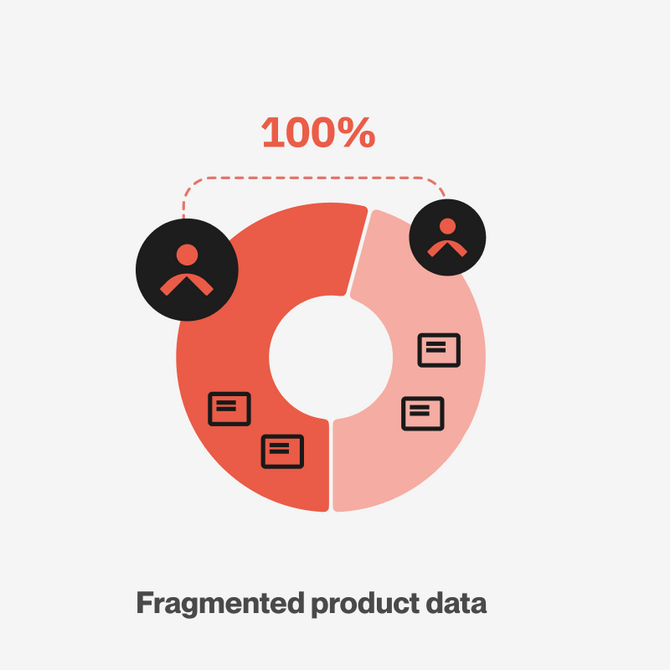
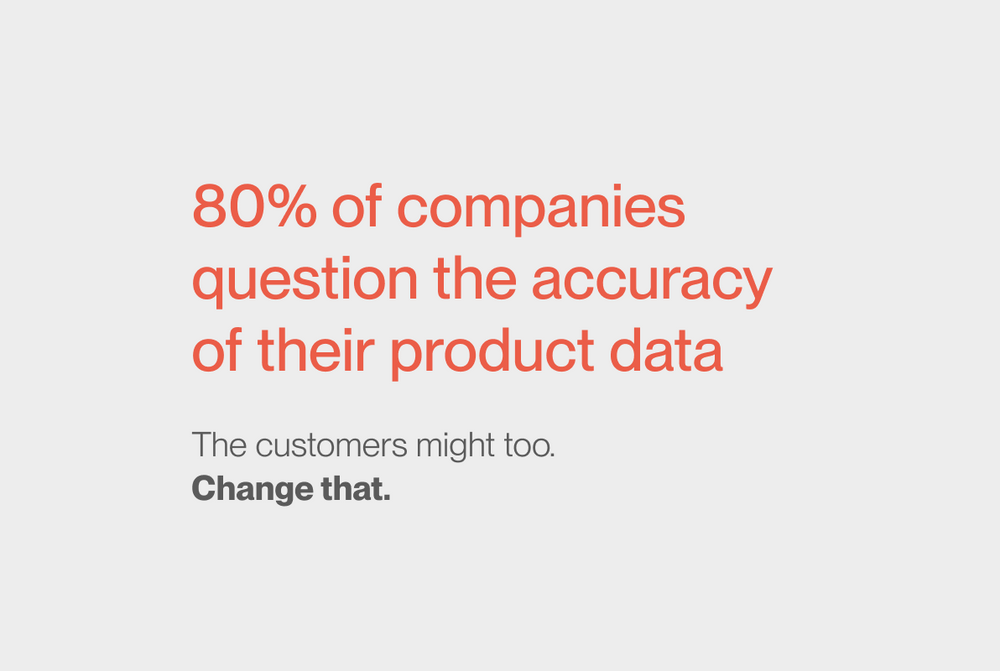

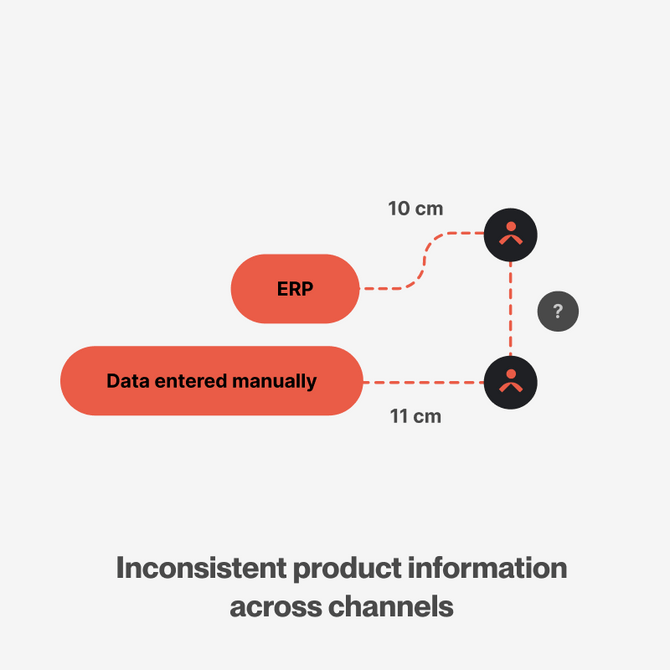
Information is essential
PIM – a multi-functional solution for your business
PIM is used by companies of all types: from growing e-commerce stores to large-scale manufacturers, distributors, and wholesalers working across multiple sales channels. It’s far more than a product database. It supports, simplifies, and speeds up information management across your entire business ecosystem. This system:
Allows easy editing and enrichment of metadata, product descriptions, and visual assets.
Supports data personalization and performance analysis to strengthen your marketing and sales efforts.
Organizes team workflows and automates routine tasks in the product data lifecycle.
Facilitates information flow with suppliers and trade partners, ensuring data consistency across the supply chain.
Acts as an integration hub, standardizing and organizing information flows between systems for better visibility and control.
When you still want more
Related technologies
We deliver platforms that go hand in hand with PIM and support your goals more effectively. What more can we add to help you achieve top results:
Frequently asked questions about PIM and the implementation process
What do I need a PIM system for?
PIM is a system that allows you to create, collect, store, and administer detailed product information (covering everything from offer-related content to marketing messages and technical specifications). The platform can be integrated with external and internal systems of the company. This enables efficient and consistent distribution of product data across all your active sales channels.
How long will it take to implement a PIM system?
The length of a PIM project depends on several key factors: how extensive your product data is, the volume of information that needs to be migrated, the nature of your sales channels, and how many systems require integration (ERP, e-commerce, etc.). For smaller-scale needs, implementation may only take a few weeks. For larger, more complex solutions, it can take several months. No matter the scope, we ensure complete transparency from day one, with a clear roadmap and structured process, broken down into well-defined steps.
In what ways can artificial intelligence enhance product data management in a PIM system?
Artificial intelligence is playing a bigger role in PIM, offering new ways to make work easier and faster. AI can handle tasks like:
- creating and improving product descriptions automatically,
- tagging and organizing products,
- making content SEO-friendly,
- translating descriptions into other languages,
- spotting duplicates and correcting mistakes.
I already have a PIM tool, but it’s underperforming or no longer meets my needs. What are my options?
This situation is quite typical, especially during periods of business growth or operational change. Our team can help by conducting a thorough audit of your current solution. We analyze where it falls short (technically and functionally) and based on that, we propose specific improvements, such as:
a) optimizing and reconfiguring the system to better support your current operations,
b) adding custom modules or features to meet your new requirements,
c) connecting it with other tools or platforms to streamline data and processes,
d) if a system replacement is necessary, we handle the entire migration and implementation, ensuring your business continues running.
Is PIM really necessary if I already use Excel or an ERP?
Excel can be a helpful starting point, but it falls short when managing detailed product information. It can’t manage multimedia content (like photos or videos), lacks version tracking, and doesn’t support automated, consistent distribution to multiple channels. These shortcomings often lead to inconsistencies and human errors, especially in team settings. ERP systems, while excellent for operational data like stock levels or pricing, aren’t equipped to manage the full spectrum of product content (like descriptions, specifications, visuals, or different language versions). PIM software complements your existing tools and fills these critical gaps.
What happens after go-live? Do I need ongoing support?
After launch, we provide tailored support based on your Service Level Agreement (SLA). This can include: bug fixing and performance monitoring, training for new team members, iterative improvements based on user feedback, roadmapping future feature rollouts, or system updates.
How do I integrate a PIM with my e-commerce platform?
Most modern PIMs offer APIs or native connectors for e-commerce platforms like Magento, Shopware, Shopify Plus, or BigCommerce. You can also use middleware (e.g., Mulesoft) or direct custom integrations. We'll help you choose the right integration architecture based on your systems.
Pimcore, Akeneo, or Ergonode – which is the best PIM system?
There’s no clear-cut winner when it comes to PIM systems. The right choice is shaped by your business context: IT systems, budget, product catalog structure, internal operations, and integration plans.
Akeneo PIM appeals to businesses that value an intuitive experience and straightforward usability, especially within the e-commerce space. It shines in areas such as fast onboarding, smooth integration with top e-commerce platforms, and comprehensive attribute and variant management. On the downside, the Community edition offers limited permission management and lacks an integrated Digital Asset Management (DAM) module, which may necessitate external solutions.
Pimcore is a powerful and versatile platform for managing data, combining PIM, MDM, DAM, CMS, and CDP. It is aimed at more complex implementations, often in B2B settings. Its key benefits include high flexibility, scalability, support for detailed workflows, and full control over data. As an open-source system with many features, it allows for significant customization. However, its complexity also means it requires experienced technical teams and more time for setup and maintenance.
Ergonode PIM suits companies that value a modern, efficient, and easy-to-navigate system, particularly in retail, fashion, or interior design. Its advantages include an intuitive interface, modern product data management, built-in DAM, and great automation features for bulk actions. While it may not yet have the community size of tools like Akeneo or Pimcore, it provides a full-featured, efficient solution built with ease of use and workflow comfort in mind.





